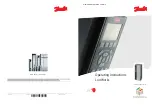
1-65
1
1
●
For the flare nuts at tubing connections, be sure to use the
flare nuts that were supplied with the unit, or else flare nuts
for R410A (type 2). The refrigerant tubing that is used must
be of the correct wall thickness as shown in the table below.
Tube diameter
Tightening torque
(approximate)
Tube thickness
ø6.35 (1/4")
14 – 18 N · m
{140 – 180
kgf
· cm}
0.8 mm
ø9.52 (3/8")
34 – 42 N · m
{340 – 420
kgf
· cm}
0.8 mm
ø12.7 (1/2")
49 – 61 N · m
{490 – 610
kgf
· cm}
0.8 mm
ø15.88 (5/8")
68 – 82 N · m
{680 – 820
kgf
· cm}
1.0 mm
Because the pressure is approximately 1.6 times higher
than conventional refrigerant (R22) pressure, the use of
ordinary flare nuts (type 1) or thin-walled tubes may result
in tube rupture, injury, or asphyxiation caused by refrigerant
leakage.
●
In order to prevent damage to the flare caused by over-
tightening of the flare nuts, use the table above as a guide
when tightening.
●
When tightening the flare nut on the liquid tube, use an
adjustable wrench with a nominal handle length of 200 mm.
Insulating the Refrigerant Tubing
Tubing Insulation
●
Thermal insulation must be applied to all units tubing,
including distribution joint (field supply).
* For gas tubing, the insulation material must be heat
resistant to 120°C or above. For other tubing, it must be
heat resistant to 80°C or above.
Insulation material thickness must be 10 mm or greater.
If the conditions inside the ceiling exceed DB 30°C and RH
70%, increase the thickness of the gas tubing insulation
material by 1 step.
Two tubes arranged together
Liquid tubing
Gas tubing
Insulation
CAUTION
If the exterior of the outdoor unit valves has been finished
with a square duct covering, make sure you allow sufficient
space to access the valves and to allow the panels to be
attached and removed.
Taping the fl are nuts
Wind the white insulating tape around the flare nuts at the gas
tube connections. Then cover up the tubing connections with
the flare insulator, and fill the gap at the union with the supplied
black insulating tape. Finally, fasten the insulator at both ends
with the supplied vinyl clamps.
Flare insulator (supplied)
Insulating tape
(supplied)
Tube insulator
(not supplied)
Heat resistant
120°C or above
Flare union
Flare nut
Unit side
Insulation material
The material used for insulation must have good insulation
characteristics, be easy to use, be age resistant, and must not
easily absorb moisture.
CAUTION
After a tube has been insulated, never try to bend it into
a narrow curve because it can cause the tube to break or
crack.
Never grasp the drain or refrigerant connecting outlets
when moving the unit.
Taping the Tubes
(1) At this time, the refrigerant tubes (and electrical wiring
if local codes permit) should be taped together with
armoring tape in 1 bundle. To prevent condensation from
overflowing the drain pan, keep the drain hose separate
from the refrigerant tubing.
(2) Wrap the armoring tape from the bottom of the outdoor
unit to the top of the tubing where it enters the wall. As you
wrap the tubing, overlap half of each previous tape turn.
(3) Clamp the tubing bundle to the wall, using 1 clamp approx.
each meter.
Insulated tubes
Drain hose
Clamp
NOTE
Do not wind the armoring tape too tightly since this will
decrease the heat insulation effect. Also ensure that the
condensation drain hose splits away from the bundle and drips
clear of the unit and the tubing.
281258_EU.indb 18
2016-9-1 13:03:53
19
CAUTION
●
Never place the panel face-down.
Either hang it vertically or place it on top of a
projecting object. Placing it face-down will damage
the surface.
●
Do not touch the flap or apply force to it.
(This may cause flap malfunction.)
Flap
7-2. How to Install the Panel for Cassette
(1) Removing the air-intake grille
1) Remove the 2 screws on the latch of the air-intake
grille. (Reattach the air-intake grille after installation of
the panel for cassette.)
2) Slide the air-intake grille catches in the direction
shown by the arrows
1
to open the grille.
1
1
Hinges of air-intake grille
Panel for cassette
Screw
Latch
Air-intake grille
3) With the air-intake grille opened, remove the grille
hinge from the panel for cassette by sliding it in the
direction shown by the arrow
2
. (Reattach the air-
intake grille after installation of the panel for cassette.)
2
Finishing the Installation
After finishing insulating and taping over the tubing, use sealing
putty to seal off the hole in the wall to prevent rain and draft
from entering.
Apply putty here
Tubing
6. HOW TO INSTALL THE TIMER REMOTE
CONTROLLER OR HIGH-SPEC WIRED
REMOTE CONTROLLER (OPTIONAL
PART)
NOTE
Refer to the Operating Instructions attached to the optional
Timer Remote Controller or optional High-spec Wired Remote
Controller.
7. HOW TO INSTALL THE PANEL FOR
CASSETTE
■
4-Way Cassette Type (Type U2)
Accessories
Panel for cassette ×1
Screws ×4
4 × 12
7-1. Preparation for Panel for Cassette Installation
(1) Checking the unit position
1) Check that the ceiling hole is within this range:
860 mm × 860 mm to 910 mm × 910 mm
2) Confirm that the position of the indoor unit and the
ceiling as shown in the diagram. If the positions of
the ceiling surface and unit do not match, air leakage,
water leakage, flap operation failure, or other problems
may occur.
Main unit
Ceiling side
Ceiling opening
dimension
A
A : Be sure to necessarily make a space within the range of
12 mm ~ 17 mm.
If not within this range, malfunction or other trouble may occur.
281258_EU.indb 19
2016-9-1 13:03:54
■
SM830252-01_欧州_Single_8・10HP_TD_SM.indb 65
16/10/14 13:57:32
AMP Air Conditioning
www.ampair.co.uk | [email protected]
















































